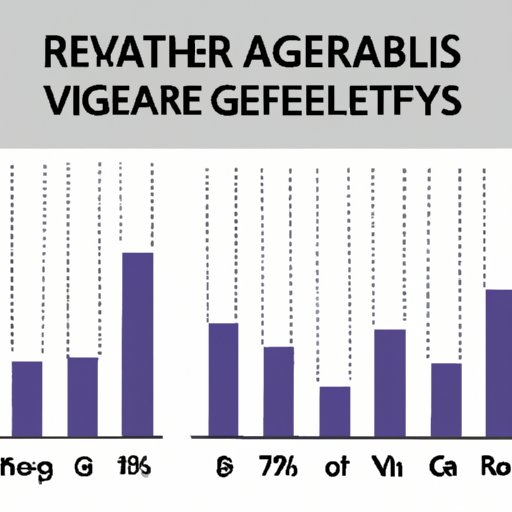Introduction
Facial hair is an important part of a person’s overall appearance, so it’s no wonder why so many people are curious about how fast facial hair grows. While there is no one-size-fits-all answer to this question, there are certain factors that can influence the growth rate of facial hair. This article will explore these factors in detail, including genetics, age, hormones, and nutrition.
Genetics Behind Facial Hair Growth
The first factor that plays a role in facial hair growth is genetics. Everyone’s genetic makeup is unique, so some people may have faster facial hair growth than others. This is because certain genes can affect the rate at which facial hair grows. For example, some people may have genes that make their facial hair grow faster than average, while others may have genes that make their facial hair grow slower than average.
In addition, some people may have genes that cause them to have thicker or coarser facial hair than others. This can also affect the growth rate, as thicker or coarser facial hair tends to grow slower than finer facial hair. Thus, genetics can play a significant role in determining how fast facial hair grows for any given individual.

Impact of Age on Facial Hair Growth
Another factor that can influence the growth rate of facial hair is age. Generally speaking, facial hair tends to grow faster in younger adults than older adults. This is because the body produces more testosterone when we’re younger, which helps to stimulate facial hair growth. As we get older, our bodies produce less testosterone, which can slow down the growth rate of facial hair.
It’s important to note that this isn’t true for everyone. Some older adults may still have faster facial hair growth than younger adults, depending on their genetics and hormone levels. However, on average, facial hair tends to grow faster in younger adults than older adults.

Types of Facial Hair and Their Growth Rates
Different types of facial hair can grow at different rates. For example, beards tend to grow faster than mustaches and sideburns. This is because beards are made up of larger, thicker hairs, which tend to grow faster than smaller, finer hairs. Mustaches and sideburns are typically made up of thinner, finer hairs, which can take longer to grow.
On average, most people’s facial hair will grow about half an inch per month. However, some people may experience faster or slower growth rates depending on their genetics, age, and hormone levels. Additionally, some people may find that certain areas of their face grow facial hair faster than other areas.
Effects of Hormones on Facial Hair Growth
Hormones can also have an effect on facial hair growth. The primary hormone that affects facial hair growth is testosterone. Testosterone is a male sex hormone that stimulates the production of facial hair. Higher levels of testosterone can result in faster facial hair growth, while lower levels can result in slower facial hair growth.
Other hormones, such as estrogen and progesterone, can also affect facial hair growth. Estrogen can inhibit the production of facial hair, while progesterone can promote the growth of facial hair. Thus, hormones can play a significant role in determining how fast facial hair grows for any given individual.
Benefits of Regularly Trimming Facial Hair
Although it may seem counterintuitive, regularly trimming facial hair can actually help to keep it looking neat and tidy. Trimming facial hair can help to remove split ends and unsightly flyaways, as well as keep it from becoming too long and unruly. Additionally, trimming facial hair can help to keep the hair follicles healthy and encourage new growth.
It’s important to note that trimming facial hair does not affect its growth rate. However, it can help to keep facial hair looking neat and tidy, which can improve a person’s overall appearance.

Role of Nutrition in Facial Hair Growth
Finally, nutrition can play a role in facial hair growth. A healthy diet can provide the vitamins and minerals needed for healthy hair growth, including B vitamins, zinc, and iron. Additionally, eating plenty of protein can help to promote healthy hair growth, as protein is an essential building block for hair.
Eating a balanced diet can also ensure that the body has enough energy to support healthy hair growth. Eating too few calories or too much processed food can lead to nutrient deficiencies and low energy levels, both of which can inhibit hair growth.
Conclusion
In conclusion, there are many factors that can influence the growth rate of facial hair, including genetics, age, hormones, and nutrition. Genetics can determine whether someone has faster or slower facial hair growth than average, while age can play a role in how quickly facial hair grows. Additionally, hormones can affect the rate at which facial hair grows, while a healthy diet can help to promote healthy and attractive facial hair.
To maintain healthy and attractive facial hair, it is important to eat a balanced diet that provides the necessary vitamins and minerals for healthy hair growth. Additionally, regularly trimming facial hair can help to keep it looking neat and tidy. By following these tips, it is possible to have healthy and attractive facial hair.


